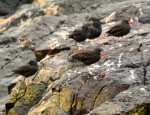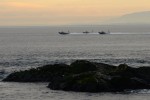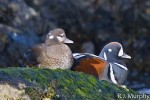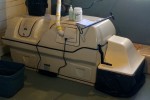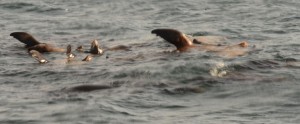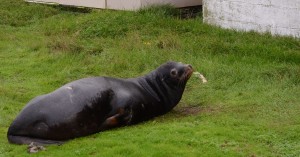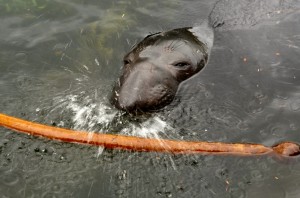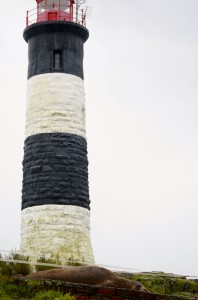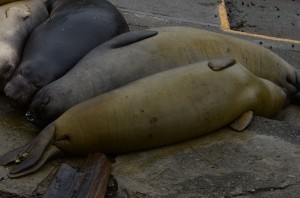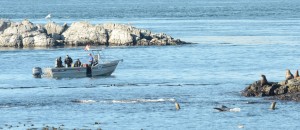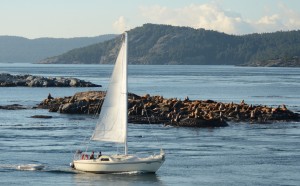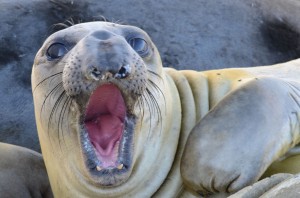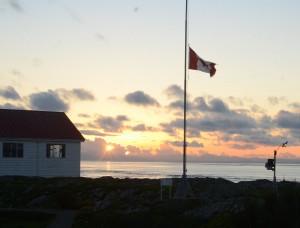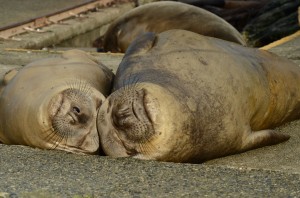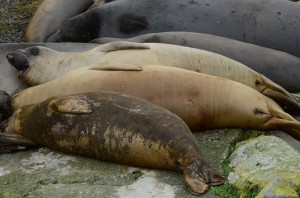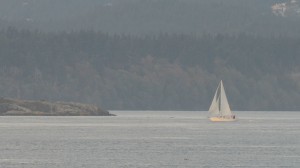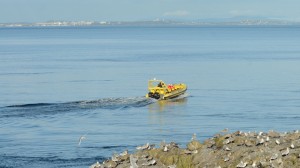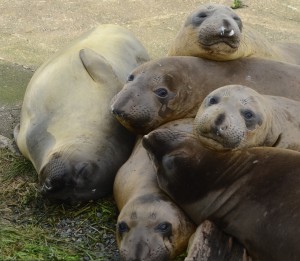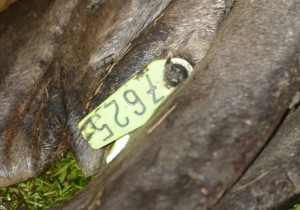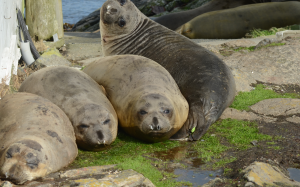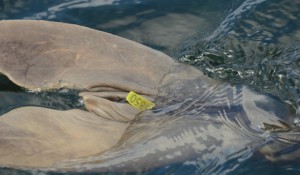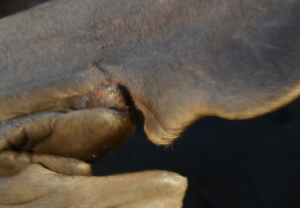The barometer dropped all last night from 1015 hPa to 1002 hPa this morning, before it began to climb again towards 1008 by the end of the day. The wind started from the northeast, but then switched to blow strongly from the southwest from mid morning onwards. The gusts reached 47 knots in the evening.
There were two whale watching boats seen in the reserve.
Once the fog lifted, the census was a bit easier to do. Then the wind blew up and most of the birds hunkered down on the leeward side of the island. I wasn’t able to positively identify all of the individual species of gull. Next week, I will strive to get an accurate breakdown of the number of glaucous-winged, thayer’s, california, western and heerman’s. There are a lot fewer gulls compared to last week, only 14% of the 3224 that were on the reserve last Thursday.
See the photos below for some of the noteworthy species and sights seen during today’s census.
Here are the results of the census:
Steller Sea Lion: 211
California Sea Lion: 404
Harbour Seal: 7
Northern Elephant Seal: 11
Bald Eagle: 1
Canada Goose: 24
Double Crested Cormorant: 14
Pelagic Cormorant: 56
Gull: 450
Black Oystercatcher: 18
Black Turnstone: 26
Surfbirds: 15
Dunlin: 4
Killdeer: 2
Savannah Sparrow: 2
Fox Sparrow: 1
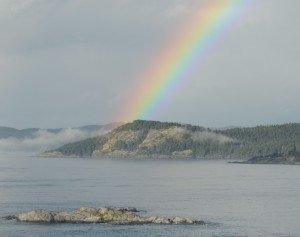
A rainbow appeared as the fog was burning off this morning. West Rock is in the foreground. The pot of gold is Church Point.
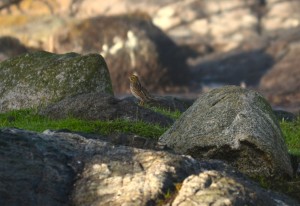
A savannah sparrow near the burial mounds by the marine science centre
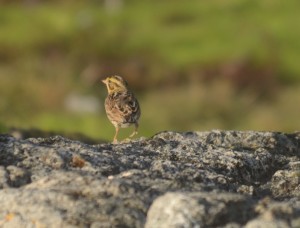
Another view of a savannah sparrow
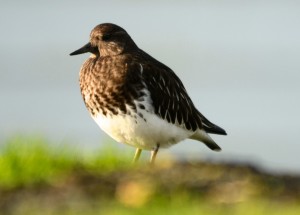
Black turnstone
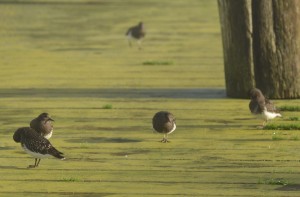
Black turnstones on the boardwalk by the crane
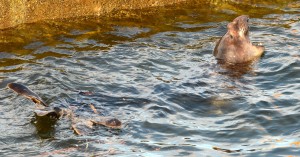
A male elephant seal floats and barks beside the jetty.
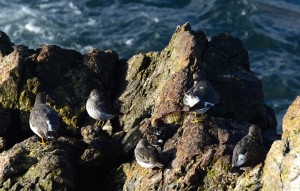
Sandpiper-like birds: dunlin, surfbird and black turnstone. Can you identify them all?
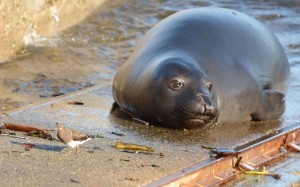
A black turnstone and elephant seal share the boat ramp
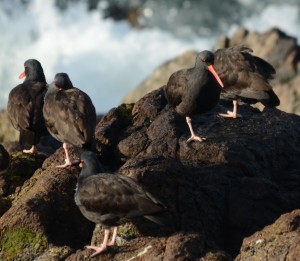
Black oystercatchers on the rocks by the surge channel
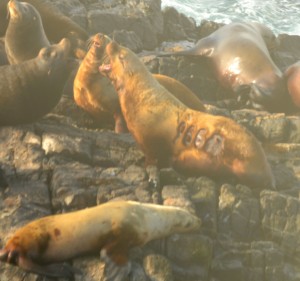
A steller sea lion with the brand “966R.” The “R” signifies that it was branded in Rogue Reef, Oregon. I will add more information when I find out. [Updated information from Pat Gearin with the NOAA: The Steller was branded as a pup at Rogue Reef, Oregon in July 2011. It is a male and so far we have 9 resights from this individual, all from BC. In 2011, he was sighted at Pachena Point once, and in 2012 he was sighted at Carmanah 8 times.]
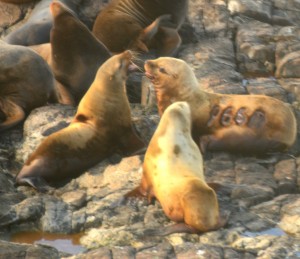
Another view of 966R
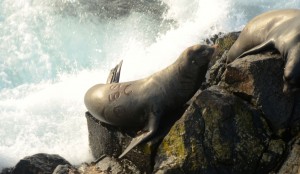
A branded california sea lion with the brand “U596.” The “U” or “C” depending on which way you look at it, means that the sea lion was captured in the Columbia River Area. It was branded in Astoria, Oregon. [Updated information from Matthew Tennis: U596 was branded on August 15, 2014 in Astoria. At that time he weighed ~193 kg. He was seen in Astoria for a few days following the branding and again in the middle of October. This is the first resight for this animal outside of Astoria. They have high site fidelity and being a relatively young animal, it is very possible he will be seen at Race Rocks for years to come.]
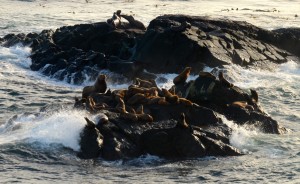
A group of steller and california sea lions get bashed by the wind and waves on the south islands.
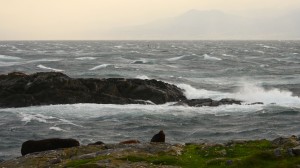
The wind gusts reached 47 knots from the southwest during the late afternoon, whipping up big waves. The buoy that marks Rosedale Rock can be seen getting tossed around in the background.
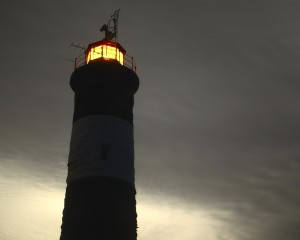
The lighthouse with the moon rising behind










